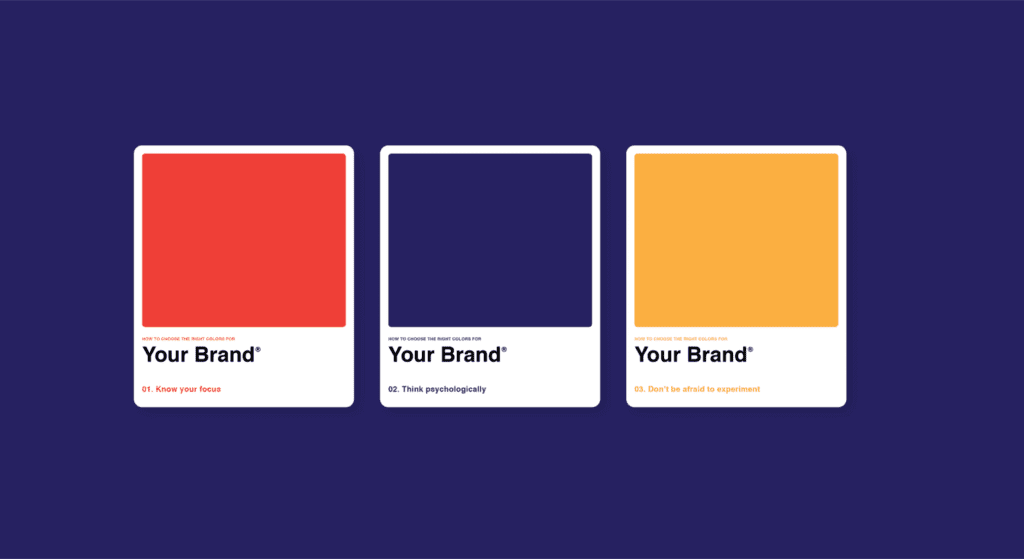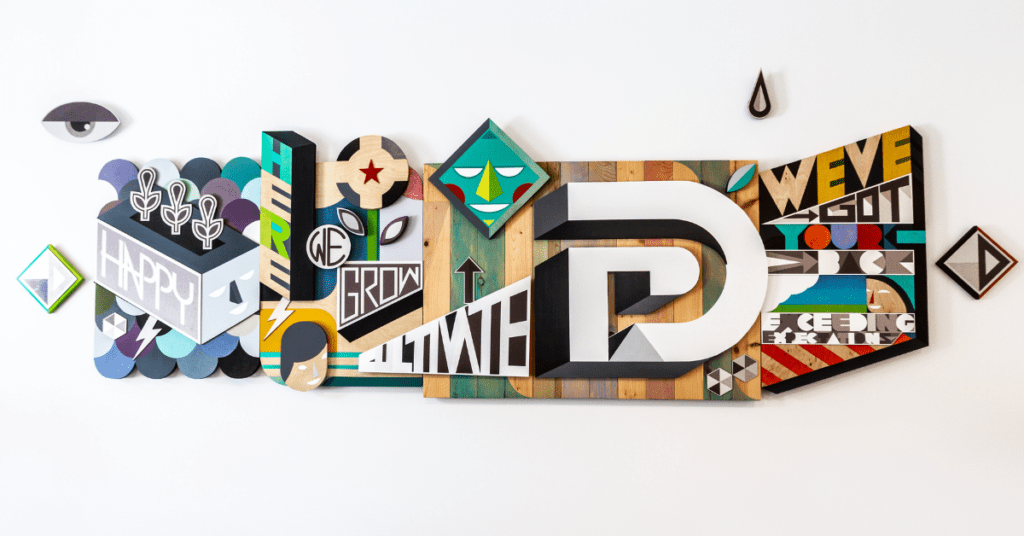When building a strong social media presence, consistent branding is key. An effective brand kit should clearly demonstrate the tone and aesthetic of your brand. What should you include in a social media brand kit? Let’s break it down.
What is a brand kit and how is it used on social media?
A brand kit includes templates, guidelines and a range of creative assets to ensure a cohesive brand identity for a business. These kits help establish style standards for color schemes, fonts, logo designs and other branding components.
Graphic designers, social media managers, marketing partners, and other members of your team can use your brand kit to get familiar with your brand’s voice and style. This is important for brand recognition in the physical world, but it is also crucial to establish a clear and recognizable presence online. Consistent branding helps people connect with your brand and builds trust over time. Plus, it makes it easier to scale your efforts and collaborate with others while ensuring a consistent visual identity.
How to create an effective brand kit
Now that we’ve covered why a brand kit matters, let’s look at the specific elements that should be part of one – especially when it comes to social media. Keep in mind: no two brands are exactly alike, so you can (and should) tailor your kit to fit your needs.
Primary and secondary colors
Color is one of the fastest ways to signal who you are and what you’re about. Your brand kit should identify 2-3 main colors, as well as any secondary or tertiary colors that are part of your brand guidelines.
- Include hex codes and any RGB/CMYK values you might need.
- Show visual swatches so everyone knows what the colors actually look like.
- Provide tips on when to use each color (e.g., headlines vs. background fills).
- Include accessibility guidance – like which color pairings have enough contrast.

Logos
A brand’s logo is usually its most identifiable element. However, there are often several variations of a company’s logo that can be employed in different contexts. Your brand kit should show the logo and all color variations.
- Link to downloadable formats that work for both web and print (.SVG, .PNG, .JPG, .EPS).
- Specify rules for white space around your logo and minimum sizing.
- Offer guidance on which logo to use with different background colors.
- Explain what not to do (like stretching, rotating or changing colors).
Typefaces
Just like brand colors, using 1-2 consistent fonts for text on social media graphics and other digital marketing content is a powerful way to establish a cohesive brand identity. This part of the brand kit should detail fonts and font sizes for headlines and body copy, as well as any preferences for text spacing (known as kerning and leading) to ensure uniformity. If your brand fonts are not available everywhere, you should include web-safe backup fonts.

Voice and Tone
Your brand’s visual identity is only part of the equation – how your brand sounds on social media matters, too. An effective brand kit should include guidelines for voice and tone that reflect your brand’s personality.
This section of your brand kit should outline how your brand communicates. Is your voice playful or polished? Do you use slang and humor, or do you keep it formal and concise? These decisions impact how your brand is perceived and how well it resonates with your target audience.
- Overall Tone: Should posts sound professional, friendly, cheeky, educational, or something else?
- Formality Level: Are contractions (can’t, won’t), casual phrases or internet slang allowed?
- Emoji Use: Outline when (or if) emojis should be used, which ones are on-brand, and how frequently they appear in captions or replies.
- Hashtag Strategy: Include guidance on branded vs. trending hashtags, quantity per post, and formatting (e.g., using sentence case vs. all lowercase).
- Punctuation and Formatting Preferences: Should you use exclamation points sparingly? Is sentence case or all caps acceptable for emphasis?
Consistency in voice and tone helps build trust and familiarity with your audience, while also making it easier for anyone creating content – whether it’s your internal team or an external partner – to write in a way that’s unmistakably you.
Templates
Templates can be helpful for brand consistency and save a ton of time in the social media space. Utilizing templates for any recurring types of social media content is a great way to create a consistent and well-branded feed on Instagram or LinkedIn. A few content ideas using branded templates include employee anniversaries, major announcements, promotions, testimonials, impact statistics, etc. When creating this part of your social media brand kit, be sure to include platform specifications, such as different sizes needed for each channel.
While templates can be helpful, it’s important not to get so reliant on them that your content gets stale. Social media algorithms are also constantly changing, so be sure to stay on top of how those changes might influence the types of images you share. For example, Instagram mainly operated off of 1:1 aspect ratios since its inception, but in 2025, it changed feed posts to preview in a 3:4 aspect ratio.
Other Graphic Elements
Sometimes it’s the little extras – like stickers or textures – that bring a brand to life. These elements can be especially useful on social media given its fast-paced nature and you have just a few seconds to grab the user’s attention.
- Include a library of icons that match your brand style.
- Add any custom patterns or shapes that show up often in your content.
- Share guidance on animations (e.g., when to use movement and when to keep it static).
- Provide a few examples of graphic elements in real posts.
- Make sure files are easy to grab and use across design platforms.
- Explain how to adapt these elements for new formats like Reels, Stories or carousels.
Photography
Lastly, photography. You might be surprised how big of an impact the type of photos used can have on a brand’s visual identity. Defining the preferred orientation of photos, whether they should be staged or candid, the coloring, editing and backgrounds are all great ways to ensure a uniform look.

Looking to leverage social media as part of your marketing strategy? Connect with Dittoe PR
Those are the basics of building a brand kit for social media! By understanding the importance of a consistent brand identity and clearly defining the elements specific to your company, you’ll create a toolkit that helps you show up with clarity, personality and professionalism – no matter who’s managing your channels.
Whether you’re just starting out or looking to refresh your existing guidelines, creating a strong brand kit is one of the smartest ways to level up your digital presence. If your company could benefit from an updated social media brand kit or ongoing social media management, contact us to learn how we can help!







0 Comments